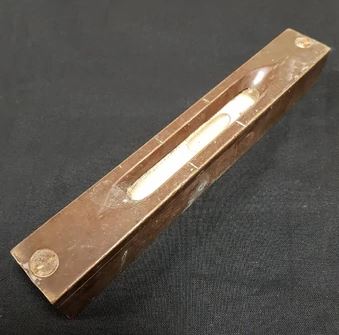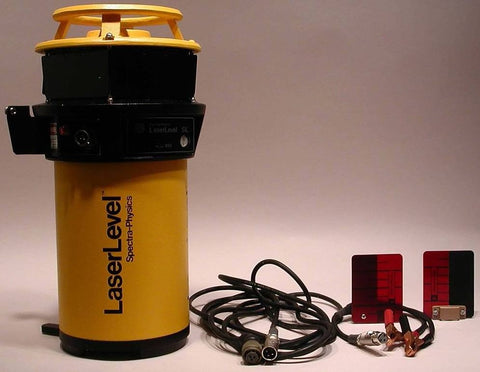History of Levels, Spirit Levels and Measuring Levels
Spirit levels aren’t some sort of achievement you can unlock with training or a tool you can use to search for how many ghosts are around, but it’s actually the proper name for what we generally call the tool known as a level. It’s called a spirit level primarily because the bubble suspended in liquid that signifies how level something is is typically suspended in an alcohol (ie spirits) or oil. Water isn’t used primarily due to concerns of freezing. The idea of using a tool to measure level has been around for millennia, going as far back as the ancient Egyptians and afterward the ancient Romans. The Egyptians used a plumb line with an “A-frame” to help ensure each stone used in construction was level and the Romans used water filled tanks as a primitive spirit level. This method of measuring level was used for centuries until modified in the middle ages in 1661 when Melchisedech Thévenot invented what we would recognize today as the spirit level, although Giovannia Riccioli worked with water levels as early as the 1630s. Regardless, Thévenot’s design is considered the forebear of the level that we use today.
Thévenot was essentially a “renaissance man” interested in various sciences and was apparently friends with Christiaan Huygens. His interests and knowledge helped him attain a relatively accomplished life including working as the Royal Librarian for King Louis XIV. It seems most likely that his invention of the spirit level occurred some time during his scientific studies and after he invented the spirit level, many believe this style of level remained isolated to his specific region, with the exception of the occasional expedition, until the 18th century. The old ways of measuring as well as new ways like the similar in concept, yet different in design Bull’s Eye Level appeared in the late 1700’s and measured level in all directions and these have been used by carpenters or in survey work.
Although Thévenot’s level is considered the starting point of the spirit level as we know it, many other styles of level appeared, many of which are variations of the spirit level. These basic levels include carpenter’s levels, mason levels, torpedo levels, line levels and more. There are also many other types of levels referred to as water levels, optical levels and laser levels. In terms of basic levels based on the spirit level, little has changed until perhaps the 1980s when electronic, digital and laser levels were introduced or caught on. You can see a modern Klein Tools digital level which displays the angle of a given tilt which is definitely a cool feature. The successful introduction of laser levels in construction by Spectra did occur in the 80s, but there was a lot of drive to use lasers in construction as far back as the 60s when Theodore Maiman is said to have produced the first laser. In fact, Spectra produced the first construction laser in 1968 and by 1973 had made the first self-leveling laser level and we made a passing reference to how laser levels evolved in this blog. The technology for laser levels has of course improved dramatically in a relatively short time which has allowed production of automated laser levels as well as compact laser levels.
While technology over the past 350 years has brought many changes and new ways to measure level, the traditional spirit level has been one of the most versatile tools and has stayed largely the same with improvements being made primarily to the materials the levels are made of as well as the addition of various features. Here at Haus of Tools we appreciate how this tool has changed over the centuries and we’re proud to carry the most common types of levels like standard spirit levels made by Greenlee Tools, Ideal Tools and Klein Tools. These standard types of levels are made from high quality metals and materials to withstand the rigors of various job sites and they also come with features like a magnetic strip for easy use or a key ring for easy transport. A good level is one of the key tools to ensuring that your job is done right and with the advances in technology today’s levels are incredibly compact, tough and versatile, so if you need a new level, come check us out! As the technology continues to improve we’ll be sure to stay on top of it!


























Leave a comment